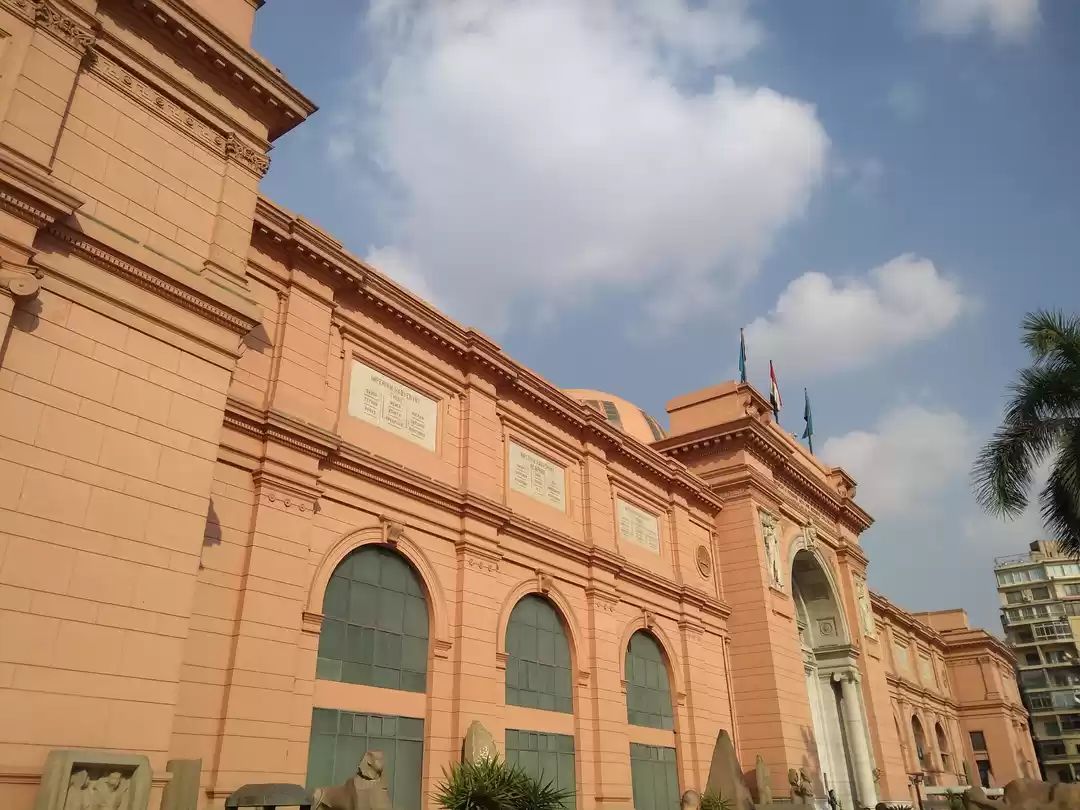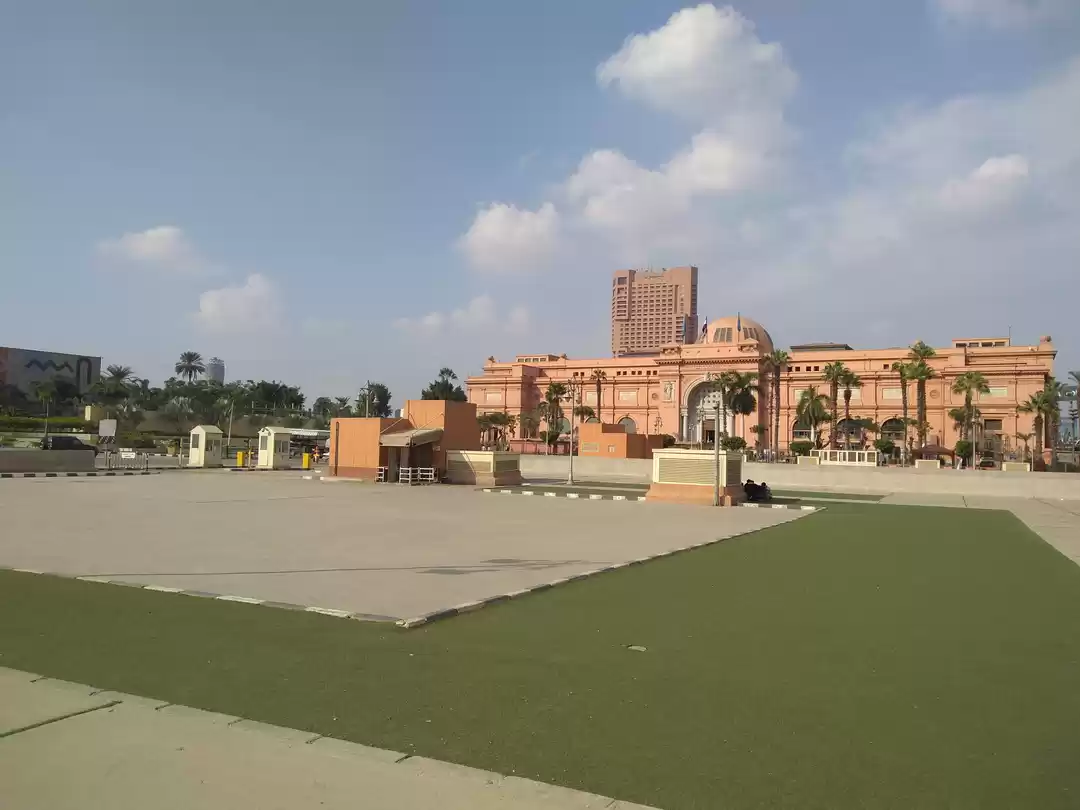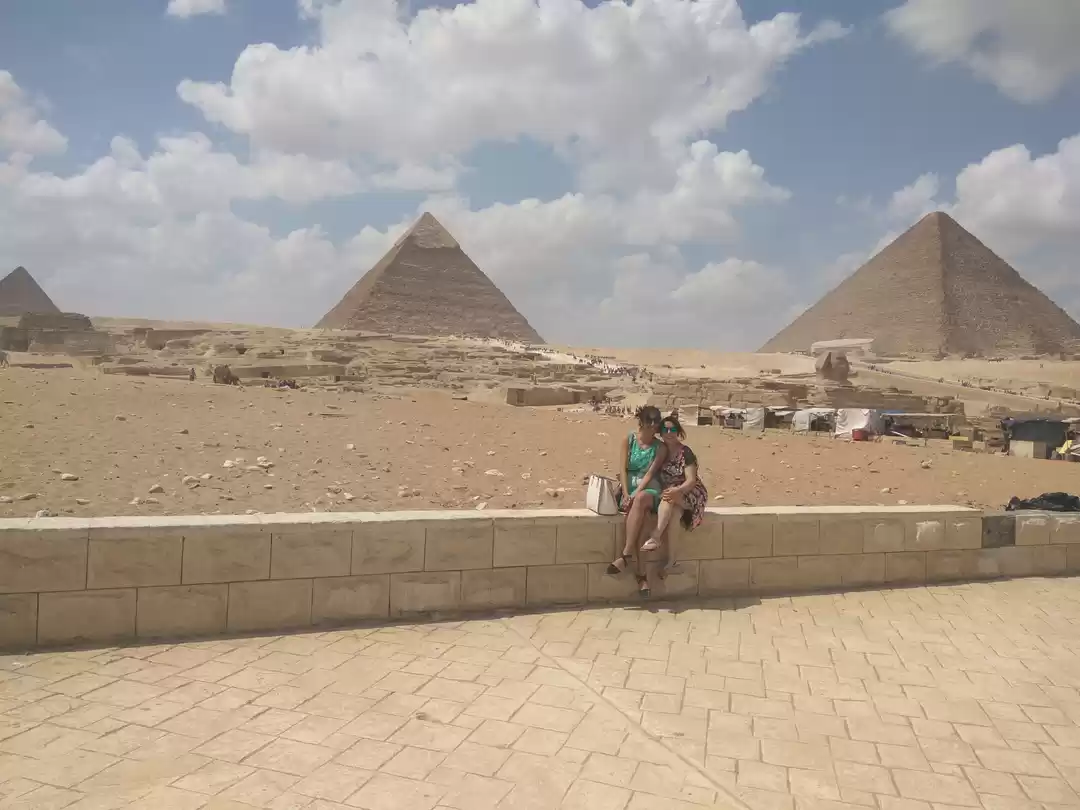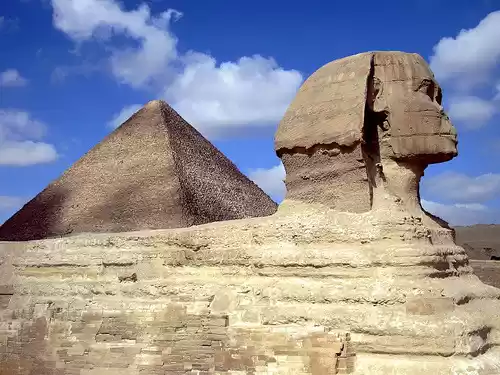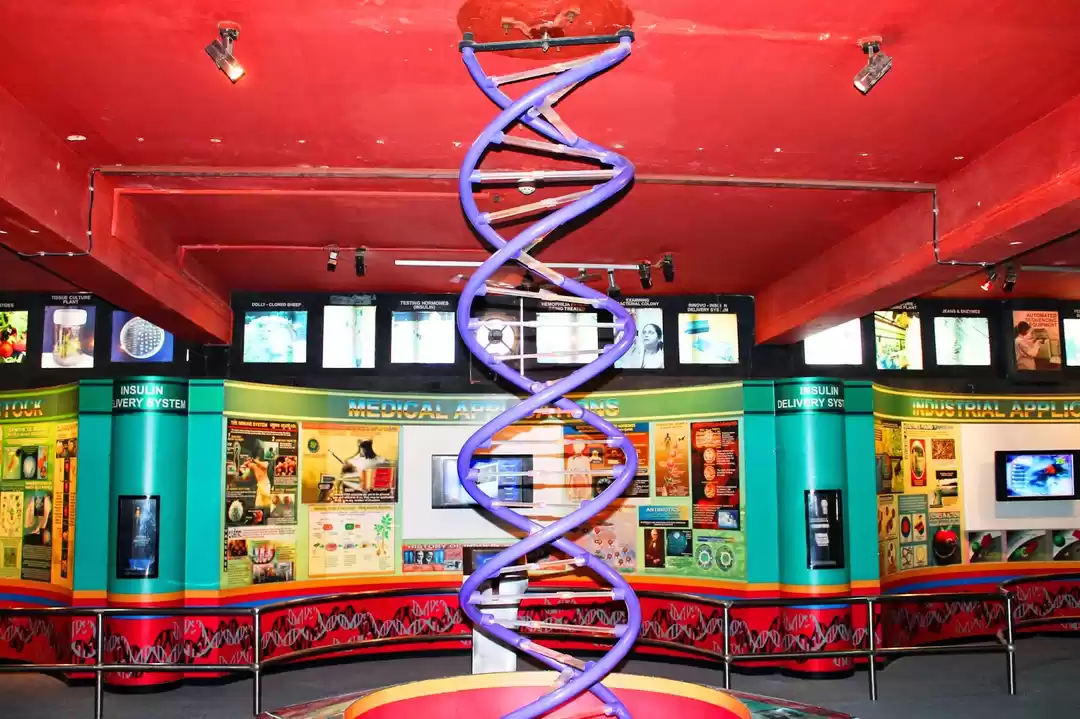Imagine walking through the halls of history, where thousands of years of human civilization are displayed in front of your eyes. Imagine seeing the dazzling treasures of the pharaohs, the mysterious mummies of the kings and queens, and the fascinating artworks and writings of the ancient Egyptians.
Imagine being transported to a time and place where the pyramids, temples, and tombs were built, and where the gods and goddesses were worshipped. This is what you can experience at the Egyptian Museum in Cairo, the world’s largest and most comprehensive museum of ancient Egyptian artefacts.
The Egyptian Museum, also known as the Museum of Egyptian Antiquities, is located in the heart of Cairo, on the northern edge of Tahrir Square. It was founded in 1858 by the French Egyptologist Auguste Mariette, and opened to the public in 1902. The museum’s building is a masterpiece of neo-classical architecture, designed by the Italian architect Marcel Dourgnon. The museum’s collection consists of over 120,000 objects, ranging from the prehistoric era to the Roman period, covering more than 5,000 years of Egyptian history. The museum’s collection is divided into two main floors: the ground floor, which displays the chronological history of ancient Egypt, and the first floor, which showcases the thematic and artistic aspects of ancient Egyptian culture.
In this article, we will guide you through the highlights, secrets, and future of the Egyptian Museum, and provide you with some practical tips and resources for planning your visit. Whether you are a history buff, a culture lover, or a curious traveller, you will find something to marvel at and learn from at the Egyptian Museum. So, let’s get started and explore the wonders of the ancient civilization.
The Highlights of the Egyptian Museum
The Egyptian Museum is a treasure trove of ancient Egyptian artefacts, where you can admire and learn about the most important and famous objects from the different periods and dynasties of the civilization. The museum’s collection is divided into two main floors: the ground floor, which displays the chronological history of ancient Egypt, and the first floor, which showcases the thematic and artistic aspects of ancient Egyptian culture.

On the ground floor, you can follow the timeline of ancient Egypt, from the prehistoric era to the Roman period, and see how the civilization evolved and changed over time. You can explore the different sections and categories of the museum’s collection, such as the Old Kingdom, the Middle Kingdom, the New Kingdom, the Late Period, the Ptolemaic Period, and the Roman Period. Each section and category has its own significance and features, and reflects the different phases and aspects of ancient Egyptian civilization, such as the political, social, religious, and cultural developments.
On the first floor, you can discover the thematic and artistic aspects of ancient Egyptian culture, and see how the ancient Egyptians expressed their beliefs, values, and aesthetics through their artworks and writings. You can admire the various types of artefacts, such as statues, sculptures, reliefs, paintings, papyri, jewellery, amulets, and more. You can also learn about the different themes and topics that the ancient Egyptians were interested in, such as the gods and goddesses, the afterlife, the magic, the astronomy, the medicine, and more.
Among the thousands of artefacts on display, there are some that stand out for their beauty, rarity, or importance. These are the highlights of the Egyptian Museum, and they are not to be missed. Here are some of the most famous and impressive artefacts that you can see at the museum:

The Narmer Palette: This is one of the oldest and most important artefacts in the museum, dating back to around 3100 BC. It is a ceremonial slate tablet that depicts the unification of Upper and Lower Egypt under the first pharaoh, Narmer. It is considered to be the first historical document in the world, and it shows the earliest examples of hieroglyphs and royal iconography.
The Statue of Djoser: This is one of the oldest and most realistic statues in the museum, dating back to around 2650 BC. It is a life-size limestone statue of the third dynasty pharaoh, Djoser, who built the first pyramid in Egypt, the Step Pyramid of Saqqara. It is considered to be the first monumental sculpture in the world, and it shows the high level of craftsmanship and artistry of the ancient Egyptians.
The Menkaure Triad: This is one of the most beautiful and harmonious statues in the museum, dating back to around 2500 BC. It is a triad statue of the fourth dynasty pharaoh, Menkaure, and his two consorts, Hathor and a local goddess. It is made of greywacke stone, and it shows the idealized and elegant proportions and features of the royal figures.
The Statue of Khafre: This is one of the most majestic and powerful statues in the museum, dating back to around 2500 BC. It is a diorite statue of the fourth dynasty pharaoh, Khafre, who built the second largest pyramid in Egypt, the Pyramid of Khafre. It is considered to be one of the masterpieces of ancient Egyptian art, and it shows the divine and eternal nature of the pharaoh, who is protected by the falcon god Horus.
The Mask of Tutankhamun: This is one of the most famous and precious artefacts in the museum, dating back to around 1323 BC. It is a gold mask that covered the face of the 18th dynasty pharaoh, Tutankhamun, who died at a young age and whose tomb was discovered intact in 1922. It is considered to be one of the wonders of the world, and it shows the exquisite and intricate craftsmanship and symbolism of the ancient Egyptians.
The Secrets of the Egyptian Museum
The Egyptian Museum is not only a place of wonder, but also a place of mystery. There are many artefacts in the museum that are lesser-known and hidden from the public eye, but they are no less fascinating and intriguing than the famous ones. These are the secrets of the Egyptian Museum, and they are waiting to be discovered by the curious and adventurous travellers.
Some of the secrets of the Egyptian Museum are hidden in plain sight, but they are often overlooked or ignored by the visitors. These are the artefacts that reveal the beliefs and practices of the ancient Egyptians, such as the animal mummies, the Fayum portraits, the royal jewellery, the papyrus scrolls, and the amulets. These artefacts show the ancient Egyptians’ connection with nature, their artistic expression, their wealth and status, their knowledge and wisdom, and their magic and spirituality.
Some of the secrets of the Egyptian Museum are hidden in the dark corners, behind the glass cases, or under the layers of dust. These are the artefacts that have been discovered, preserved, restored, or displayed by the archaeologists, conservators, curators, or guides. These artefacts have interesting facts and stories behind them, such as how they were found, where they came from, what they mean, or how they were used.
Here are some of the most interesting and intriguing secrets that you can find at the Egyptian Museum:
The Animal Mummies: These are the mummified remains of various animals, such as cats, dogs, crocodiles, ibises, baboons, and more. The ancient Egyptians believed that animals had souls and could communicate with the gods, so they mummified them as offerings, companions, or symbols. The museum has a special room dedicated to the animal mummies, where you can see the different types and techniques of animal mummification, and learn about the religious and cultural significance of these creatures.
The Fayum Portraits: These are the realistic and lifelike paintings of the faces of the deceased, dating back to the Roman period. The ancient Egyptians adopted the Roman custom of painting portraits on wooden panels, and attached them to the mummies as a way of preserving their identity and personality. The museum has a collection of over 100 Fayum portraits, where you can admire the diversity and individuality of the ancient Egyptians, and see how they blended the Roman and Egyptian styles and traditions.
The Royal Jewellery: These are the exquisite and intricate pieces of jewellery that belonged to the royal family, dating back to the New Kingdom. The ancient Egyptians valued jewellery as a symbol of wealth, power, and beauty, and used various materials, such as gold, silver, copper, gemstones, glass, and faience. The museum has a treasure room that displays the royal jewellery, where you can see the stunning and elaborate designs and motifs of the ancient Egyptian jewellery, and learn about the meaning and symbolism of each piece.
The Papyrus Scrolls: These are the ancient Egyptian writings on paper-like sheets made from the papyrus plant, dating back to various periods. The ancient Egyptians used papyrus to record various types of texts, such as religious, literary, scientific, administrative, and personal. The museum has a library that contains thousands of papyrus scrolls, where you can see the different types and styles of ancient Egyptian writing, such as hieroglyphs, hieratic, demotic, and Coptic, and learn about the content and context of each text.
The Amulets: These are the small and colourful objects that were worn or carried by the ancient Egyptians as a protection against evil, harm, or illness, dating back to various periods. The ancient Egyptians believed that amulets had magical powers and could influence the fate and fortune of the wearer. The museum has a display case that showcases hundreds of amulets, where you can see the different shapes and materials of the amulets, such as animals, plants, symbols, and deities, and learn about the function and purpose of each amulet.
The Egyptian Museum is a must-see attraction for anyone who is interested in the ancient Egyptian civilization, its history, culture, and art. The museum offers a unique and unforgettable experience, where you can see and learn about the most amazing and valuable artefacts from the world’s oldest and most influential civilization. The museum is also a place of discovery and adventure, where you can uncover the secrets and mysteries of the ancient Egyptians, and their beliefs and practices. The museum is also a place of change and progress, where you can witness the challenges and opportunities facing the museum, and its future plans and projects.
Tips and resources that you should know!
If you are planning to visit the Egyptian Museum, here are some practical and useful tips and resources that you should know:
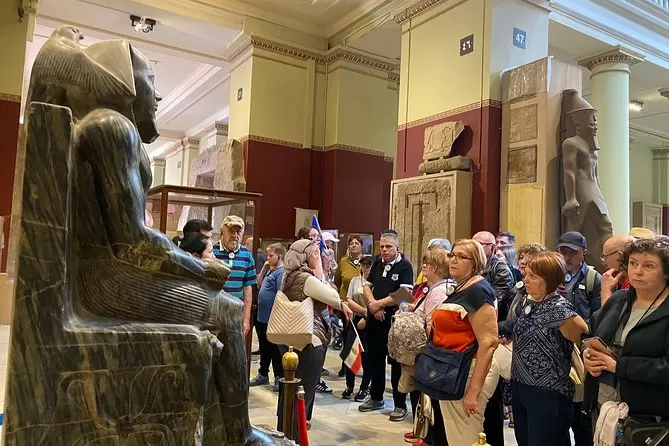
1. The museum is open daily from 9:00 am to 5:00 pm, except on Fridays, when it closes at 4:00 pm. The museum is closed on public holidays and during special events.
2. The entrance fee for the museum is 200 EGP (about 13 USD) for foreigners, and 100 EGP (about 6 USD) for foreign students. The entrance fee for the animal mummies room is an additional 50 EGP (about 3 USD) for foreigners, and 25 EGP (about 2 USD) for foreign students. You can buy your tickets online or at the ticket office at the museum.
3. The museum is located in the heart of Cairo, on the northern edge of Tahrir Square. You can reach the museum by various means of transportation, such as taxi, bus, metro, or car. The nearest metro station is Sadat, which is a few minutes walk from the museum. The museum has a parking lot, but it is often full and crowded, so it is better to use public transportation or a taxi.
4. The museum is very large and has a lot of artefacts to see, so it is recommended to allocate at least 3 to 4 hours for your visit. You can also hire a guide or join a tour group, to get a better understanding and appreciation of the museum’s collection. You can find guides and tours at the museum’s entrance or online.
5. The museum has a cafeteria, a bookstore, a gift shop, and a cloakroom, where you can buy food, drinks, books, souvenirs, and store your belongings. The museum also has a wheelchair service, a first aid service, and a lost and found service, for your convenience and safety.
6. The museum has some rules and regulations that you should follow, to respect and protect the museum and its artefacts. You are not allowed to touch, lean on, or climb on the artefacts, or to use flash photography, tripods, or selfie sticks. You are also not allowed to smoke, eat, drink, or litter inside the museum. You should also dress modestly and appropriately, and avoid making noise or disturbing other visitors.
The Egyptian Museum is a place that you will never forget, and that you will always want to come back to. It is a place that will inspire and enrich you, and that will make you appreciate and admire the ancient Egyptian civilization, and its legacy and influence on the world. We hope that you enjoyed this article, and that you learned something new and interesting about the Egyptian Museum.
If you have any feedback, questions, or experiences to share with us, please feel free to leave a comment below. Thank you for reading, and have a wonderful day.



